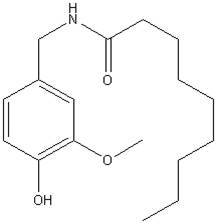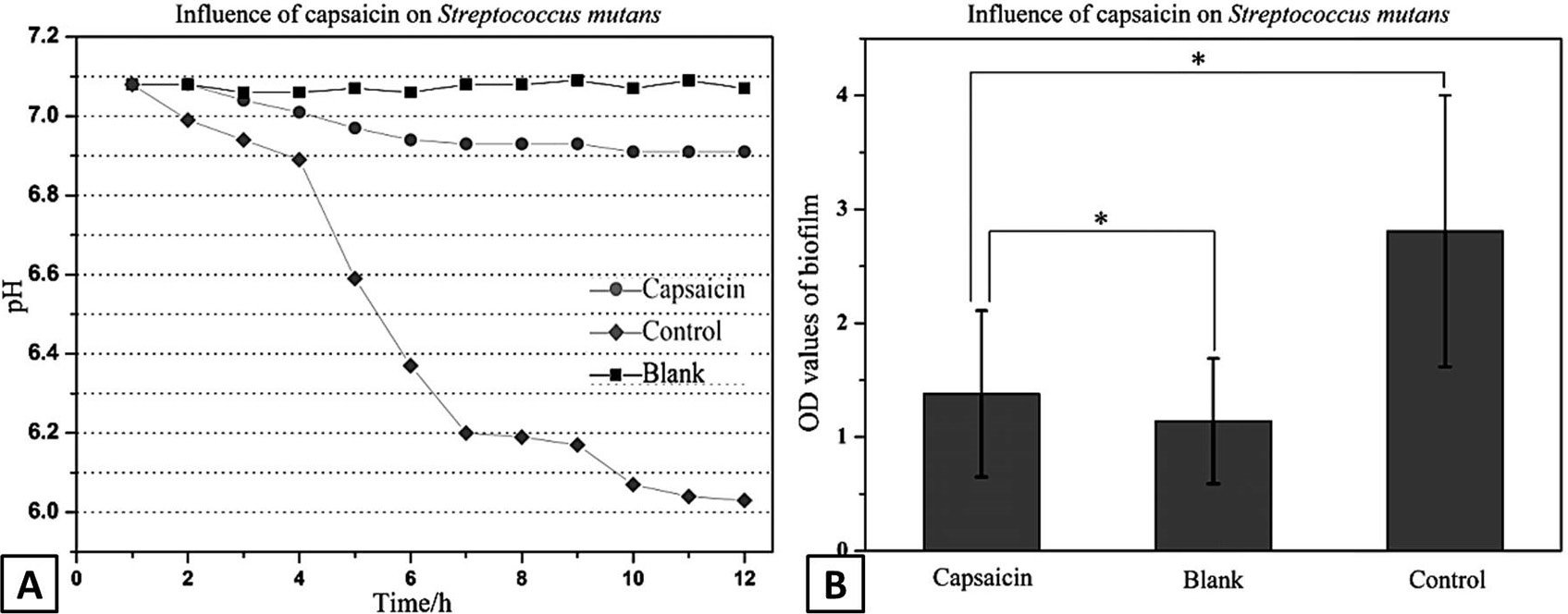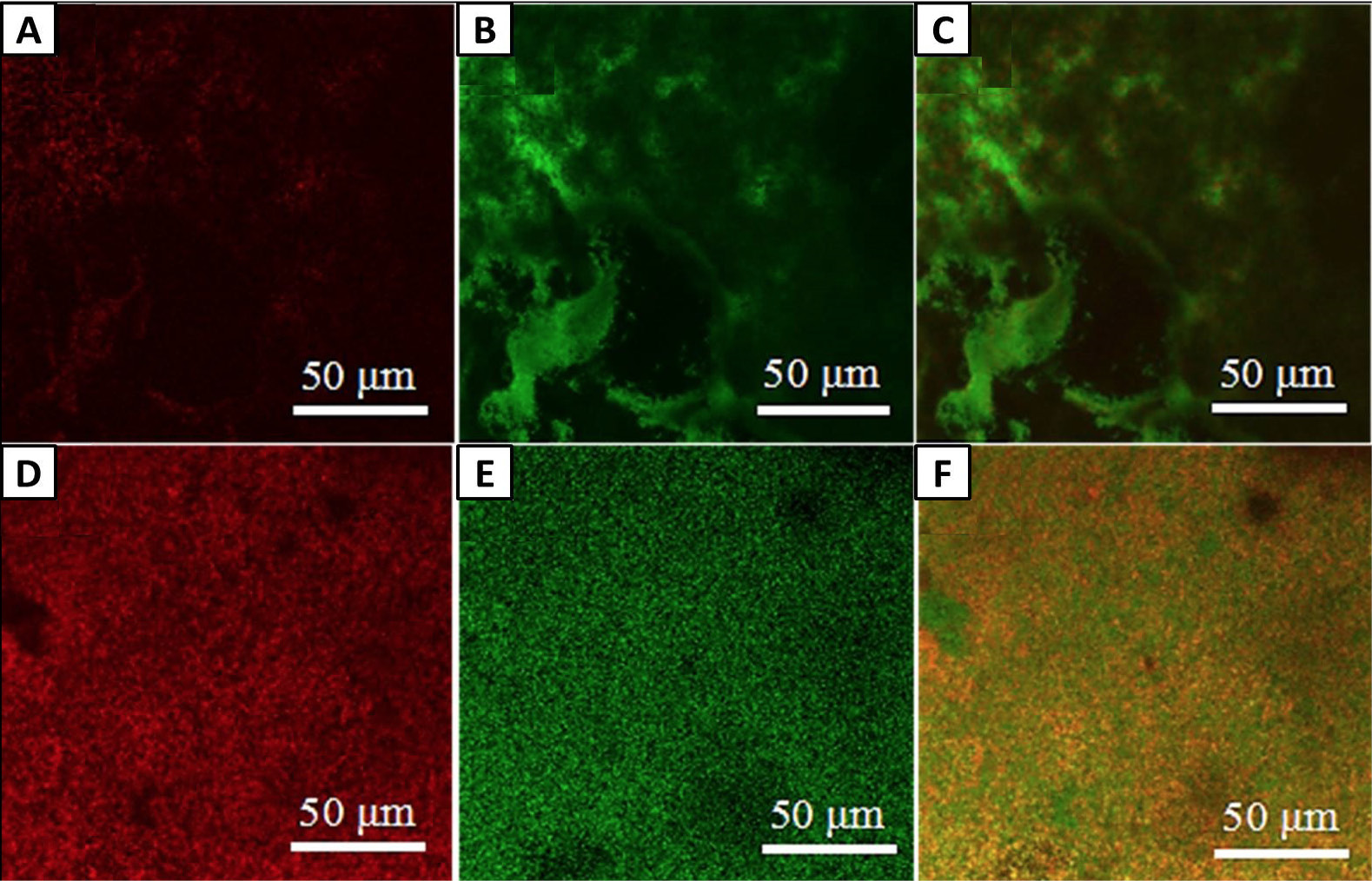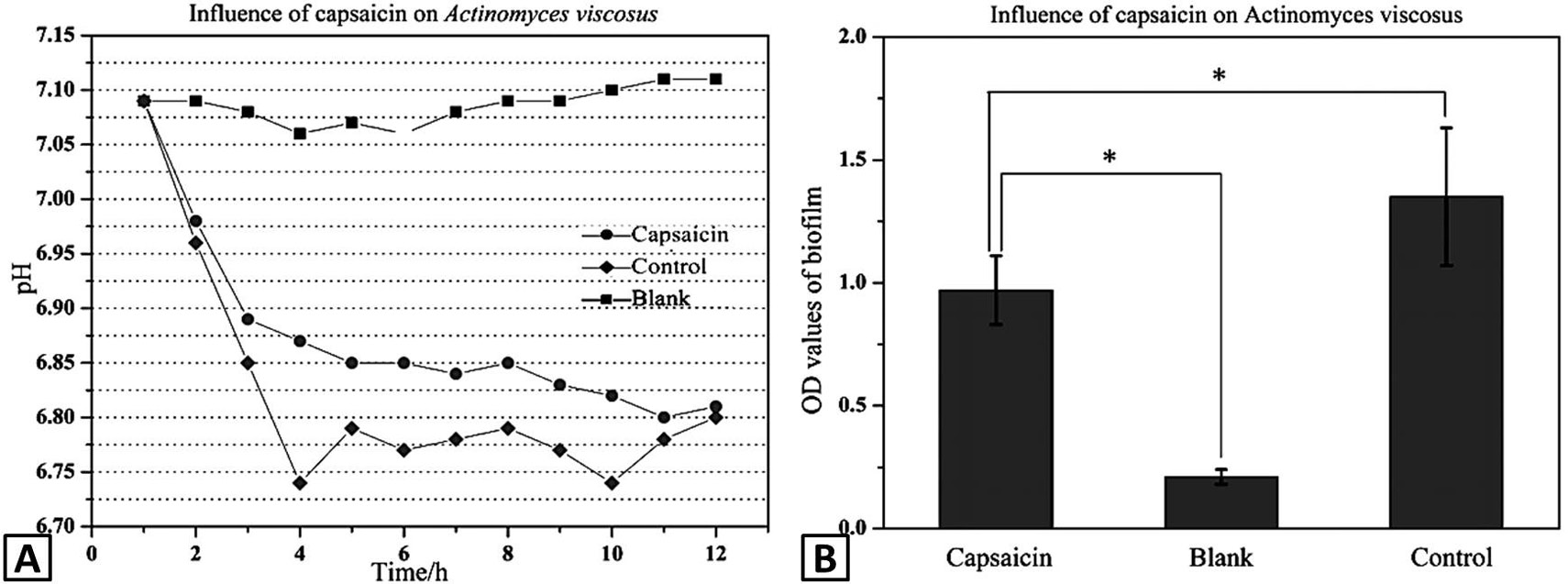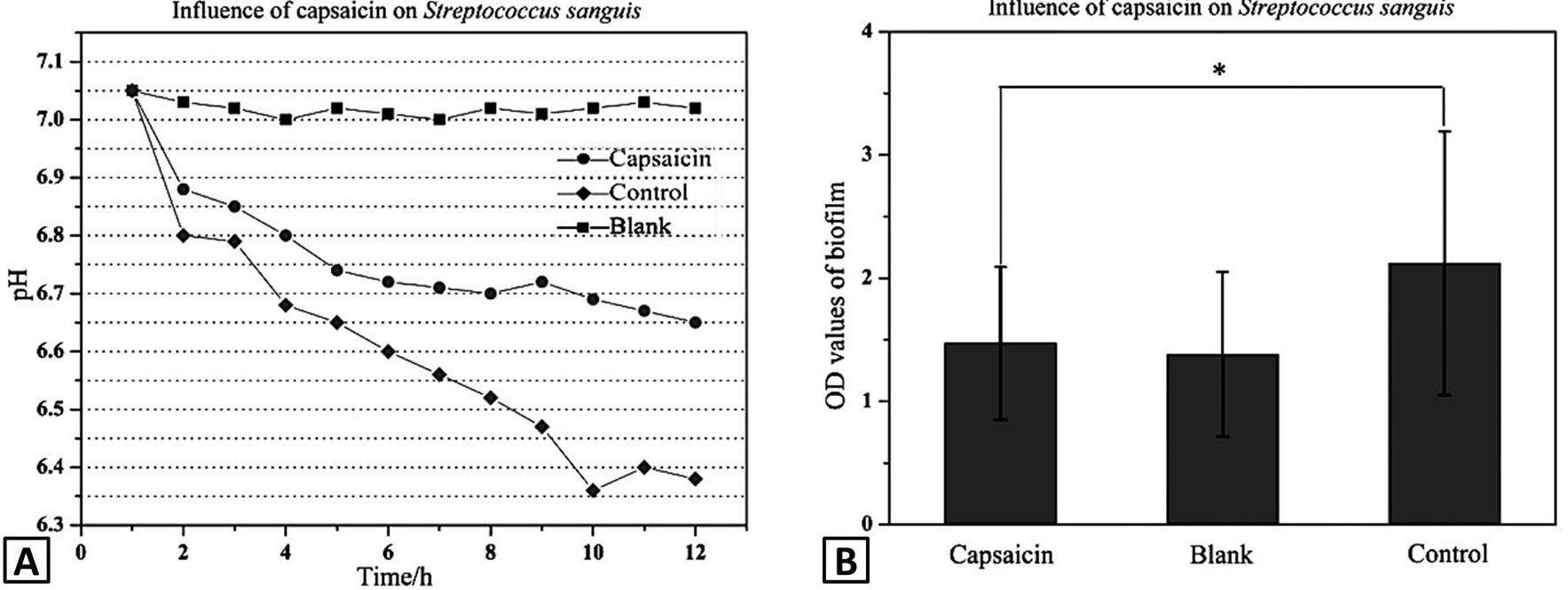Antibacterial Activity of Capsaicin against Sectional Cariogenic Bacteria
Antibacterial Activity of Capsaicin against Sectional Cariogenic Bacteria
Hao Gu*, Zhi Yang, Weiqiang Yu, Kan Xu and Yuan-fei Fu*
Chemical structure and molecular properties of capsaicin.
Antibacterial activity of capsaicin on Streptococcus mutans and biofilms: A, the trend of pH values of Streptococcus mutans effected by capsaicin in 12h. B, OD values of biofilm of Streptococcus mutans affected by capsaicin. The capsaicin group consisted of 1/2 MIC experimental capsaicin solution (95% BHI+5% alcohol) and Streptococcus mutans microbial inoculums. The control group consisted of the solution (95% BHI+5% alcohol) and microbial inoculums without capsaicin. The blank group consisted of 1/2 MIC experimental capsaicin solution (95% BHI+5% alcohol) without microbial inoculums. The data are presented as the mean ± SD (n>3). The symbol * means statistic difference between the two groups (p<0.05).
CLSM images of Streptococcus mutans: exopolysaccharides (A) and living bacteria (B) of Streptococcus mutans effected by capsaicin. C, merged image of (A) and (B). Exopolysaccharides (D) and living bacteria (E) in the control group without capsaicin. F, merged image of (D) and (E).
Antibacterial activity of capsaicin on Actinomyces viscosus and biofilms: A, the trend of pH values of Actinomyces viscosus effected by capsaicin in 12h. B, OD values of biofilm of Actinomyces viscosus affected by capsaicin. The capsaicin group consisted of 1/2 MIC experimental capsaicin solution (95% BHI+5% alcohol) and Actinomyces viscosus microbial inoculums. The control group consisted of the solution (95% BHI+5% alcohol) and microbial inoculums without capsaicin. The blank group consisted of 1/2 MIC experimental capsaicin solution (95% BHI+5% alcohol) without microbial inoculums. The data are presented as the mean ± SD (n>3). The symbol * means statistic difference between the two groups (p<0.05).
Antibacterial activity of capsaicin on Lactobacillus and biofilms: A, the trend of pH values of Lactobacillus effected by capsaicin in 12h. B, OD values of biofilm of Lactobacillus affected by capsaicin. The capsaicin group consisted of 1/2 MIC experimental capsaicin solution (95% BHI+5% alcohol) and Lactobacillus microbial inoculums. The control group consisted of the solution (95% BHI+5% alcohol) and microbial inoculums without capsaicin. The blank group consisted of 1/2 MIC experimental capsaicin solution (95% BHI+5% alcohol) without microbial inoculums. The data are presented as the mean ± SD (n>3). The symbol * means statistic difference between the two groups (p<0.05).
Antibacterial activity of capsaicin on Streptococcus sanguis and biofilms: A, the trend of pH values of Lactobacillus effected by capsaicin in 12h. B, OD values of biofilm of Streptococcus sanguis affected by capsaicin. The capsaicin group consisted of 1/2 MIC experimental capsaicin solution (95% BHI+5% alcohol) and Streptococcus sanguis microbial inoculums. The control group consisted of the solution (95% BHI+5% alcohol) and microbial inoculums without capsaicin. The blank group consisted of 1/2 MIC experimental capsaicin solution (95% BHI+5% alcohol) without microbial inoculums. The data are presented as the mean ± SD (n>3). The symbol * means statistic difference between the two groups (p<0.05).







